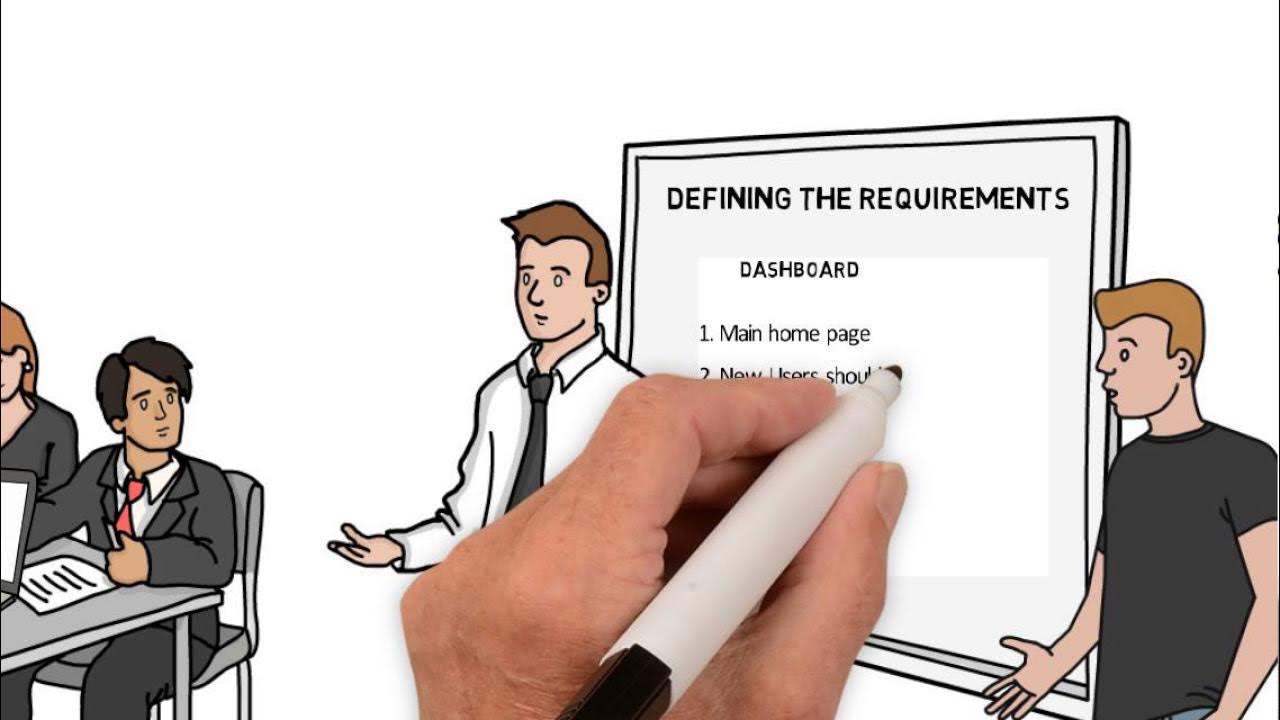Lec 05- Developing Successful Marketing and Organizational Strategies
Summary
TLDRThis video script delves into the strategic marketing process, outlining its three key phases: planning, implementation, and evaluation. It emphasizes the importance of situational analysis using SWOT, setting market and product goals, and developing cohesive marketing programs. The script also covers the implementation phase's components, such as resource acquisition and marketing organization design, and highlights the need for managers to identify and address deviations from plans to achieve marketing objectives effectively.
Takeaways
- 📈 The strategic marketing process is divided into three phases: planning, implementation, and evaluation.
- 🔍 Situational analysis in the planning phase involves conducting a SWOT analysis to understand the organization's strengths, weaknesses, opportunities, and threats.
- 🎯 After situational analysis, the next step is market product focus and goal setting, which includes market segmentation and defining measurable marketing objectives.
- 🛒 The marketing program phase involves developing a cohesive marketing mix, addressing the four Ps: product, price, promotion, and place.
- 💼 The implementation phase requires obtaining resources, designing the marketing organization, defining tasks, responsibilities, deadlines, and executing the marketing program.
- 📊 A Gantt chart is used for scheduling and tracking the progress of tasks within the marketing plan.
- 📉 The evaluation phase involves comparing actual results with planned goals to identify deviations, which could be positive or negative.
- 🛠️ Positive deviations should be exploited, while negative deviations require corrective actions to bridge the planning gap.
- 🏢 Designing the marketing organization is crucial for the successful implementation of the marketing program, with clear roles and responsibilities.
- 🌐 The SWOT analysis helps in converting internal strengths and weaknesses with external opportunities and threats into actionable strategies and plans.
- 📝 The material for the module is derived from three key books, emphasizing the importance of structured learning in marketing.
Q & A
What are the three main phases of the strategic marketing process?
-The three main phases of the strategic marketing process are the planning phase, the implementation phase, and the evaluation phase.
What is the purpose of situational analysis in the strategic marketing process?
-The purpose of situational analysis is to take stock of where a firm or product has been recently, where it is now, and where it is headed. It involves a SWOT analysis to identify the company's strengths, weaknesses, opportunities, and threats.
What does SWOT stand for and what does it represent in a strategic marketing context?
-SWOT stands for Strengths, Weaknesses, Opportunities, and Threats. It represents an organization's appraisal of its internal strengths and weaknesses, as well as external opportunities and threats.
How can a company use the results of a SWOT analysis?
-A company can use the results of a SWOT analysis to build on strengths, correct weaknesses, exploit opportunities, and avoid or mitigate threats.
What are the four components of the implementation phase of the strategic marketing process?
-The four components of the implementation phase are obtaining resources, designing the marketing organization, defining precise tasks, responsibilities, and deadlines, and executing the marketing program.
What is meant by 'marketing mix' in the context of the strategic marketing process?
-The marketing mix refers to the combination of the four Ps: Product, Price, Promotion, and Place. These elements are blended to produce a cohesive marketing program.
What is the significance of the planning gap in the evaluation phase of the strategic marketing process?
-The planning gap is the difference between the projections of the path to reach a new goal and the projections of the path of the results of a plan already in place. It signifies the deviation between what was desired and what was achieved, indicating areas that may require corrective action.
How can managers identify deviations from plans in the strategic marketing process?
-Managers can identify deviations from plans by comparing actual results with the goals set during the planning phase. This comparison helps to reveal any positive or negative deviations that may have occurred.
What actions should be taken when there is a positive deviation from the plan?
-When there is a positive deviation, managers should exploit the situation by understanding what led to the better-than-expected results and leveraging those factors to further enhance performance.
What actions should be taken when there is a negative deviation from the plan?
-When there is a negative deviation, managers should take corrective actions to address the causes of the shortfall. This may involve revising strategies, improving execution, or adjusting the marketing mix to better meet the objectives.
Can you provide an example of how a SWOT analysis can be applied to a company like Amul?
-For Amul, a SWOT analysis could identify strengths such as strong brand recall and a large customer base, weaknesses like potential operational costs or lawsuits, opportunities such as increasing per capita milk consumption, and threats like increasing competition or negative media coverage.
Outlines

このセクションは有料ユーザー限定です。 アクセスするには、アップグレードをお願いします。
今すぐアップグレードMindmap

このセクションは有料ユーザー限定です。 アクセスするには、アップグレードをお願いします。
今すぐアップグレードKeywords

このセクションは有料ユーザー限定です。 アクセスするには、アップグレードをお願いします。
今すぐアップグレードHighlights

このセクションは有料ユーザー限定です。 アクセスするには、アップグレードをお願いします。
今すぐアップグレードTranscripts

このセクションは有料ユーザー限定です。 アクセスするには、アップグレードをお願いします。
今すぐアップグレード関連動画をさらに表示

Software Development Lifecycle in 9 minutes!

Manajemen Strategis

Phases of Curriculum Development | Mary Joie Padron

Membahas Piala Dunia untuk Perencanaan Komunikasi Pemasaran Terpadu | Planning in IMC

Understanding Curriculum Development - Tyler, Wheeler, and Taba Models Explained (5 Minutes)

Periodontics | Treatment Planning | INBDE, ADAT
5.0 / 5 (0 votes)
